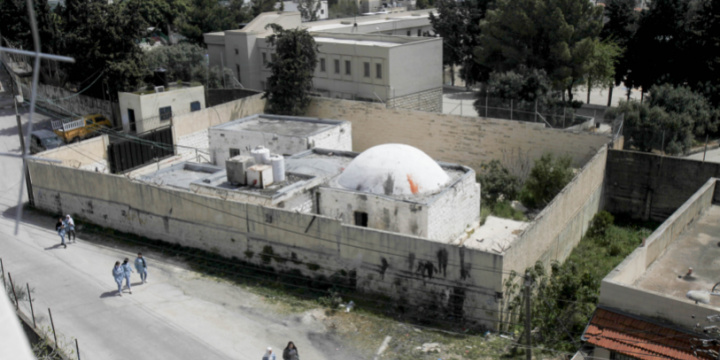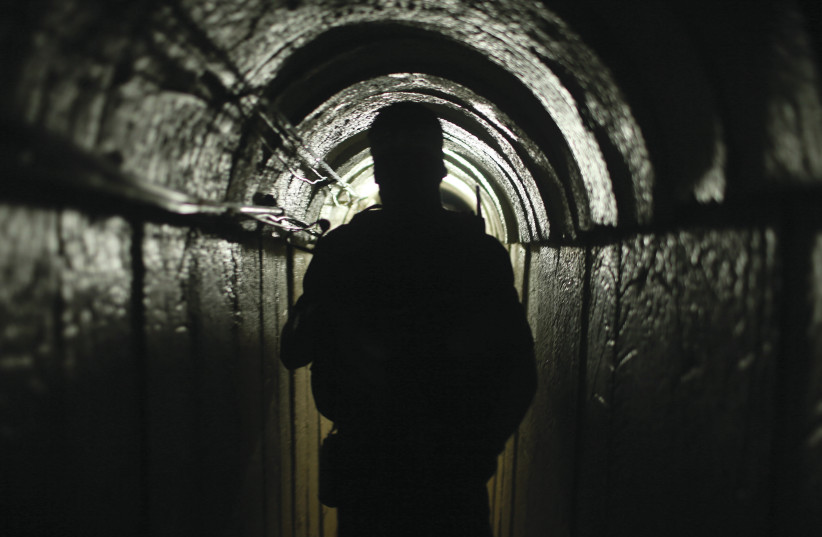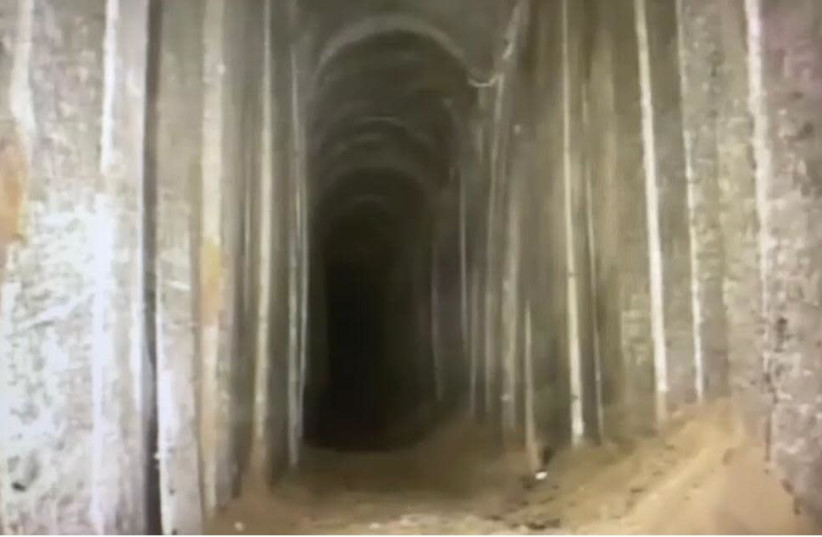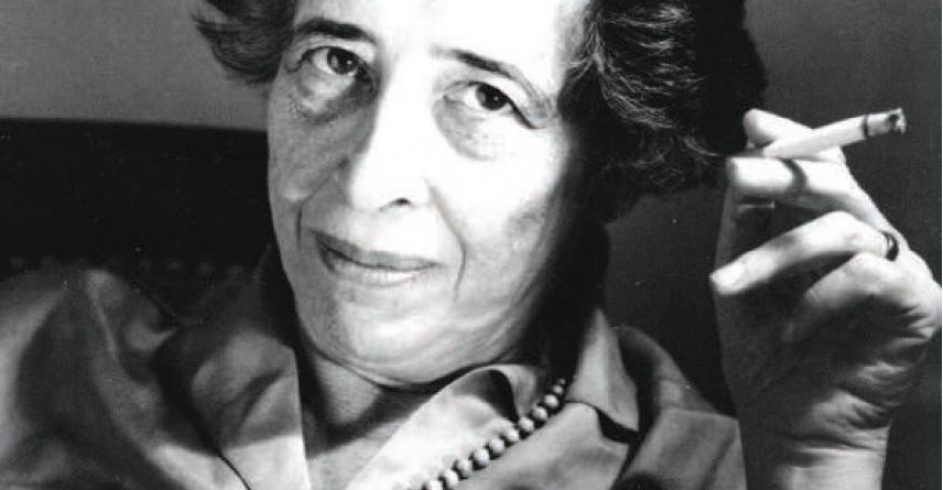
 HANNAH ARENDT, „RAHEL VARNHAGEN”
HANNAH ARENDT, „RAHEL VARNHAGEN”
JOANNA ROSZAK
W losie Rahel Varnhagen zapewne widziała Arendt prefigurację własnego losu, bez trudu można wskazać wspólny genotyp i fenotyp w ich trajektoriach biograficznych
.
Wlatach 30. XX wieku Hannah Arendt pracowała nad – pomyślaną jako habilitacja – książką o Rahel Varnhagen. Pracę zakończyła w 1933 roku, dokładnie sto lat po śmierci swojej bohaterki, która zmarła 7 marca 1833 roku w Berlinie. Dwa ostatnie rozdziały dopisała już we Francji. Przez ćwierć wieku książka miała leżakować w szufladzie.
Długo wyczekiwany tom o żyjącej na przełomie XVIII i XIX wieku założycielce berlińskiego salonu, wydany dopiero w 1957 roku i to po angielsku, ukazuje się w serii Meridian wydawnictwa Pogranicze. W losie Rahel Varnhagen zapewne widziała Arendt prefigurację własnego losu, bez trudu można wskazać wspólny genotyp i fenotyp w ich trajektoriach biograficznych. Po raz pierwszy Arendt usłyszała o Varnhagen w Heidelbergu. Katarzyna Leszczyńska, tłumaczka, więcej pisze o tym śladzie w posłowiu: „obracała się w kręgu studentów […] była współczesną wersją żydowskiej Rahel Varnhagen wśród wykształconych, arystokratycznych, nieżydowskich przyjaciół”. Broch w liście do Arendt nazwał tę książkę „abstrakcyjną pornografią”, Karl Jaspers scharakteryzował pracę jako „niekoszerną biografię”. Dzięki temu czterystustronicowemu tomowi poszerza się granica wiedzy i o Varnhagen wraz z jej salonem, i o Arendt, i o Berlinie, i o paradygmatach projektu asymilacji niemiecko-żydowskiej.
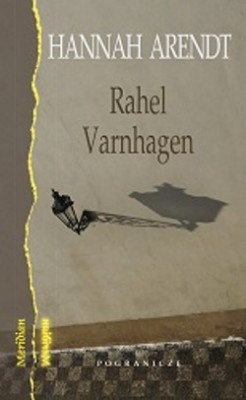
Rahel Varnhagen urodziła się 19 maja 1771 roku w Berlinie, w ortodoksyjnym domu żydowskim, w którym rozmawiało się w jidysz, jako najstarsza córka Markusa Levina, handlarza kamieniami szlachetnymi, i Chai Levin. Około roku 1790, roku śmierci swego ojca, na poddaszu domu przy Jägerstrasse w Berlinie założyła salon, zwany Poddaszem Rahel. Wygasł on wraz ze zwycięstwem Napoleona nad Prusami w 1806 roku. Amos Elon w wydanym niedawno tomie „Bez wzajemności. Żydzi i Niemcy 1743-1933” notował o salonie Rahel: „Goście zbierali się późnym popołudniem pod portretem Lessinga, przy cienkiej herbacie i ciasteczkach”. Podkreśla, że główną atrakcję stanowiła sama Rahel, jej subtelność i dar konwersacji. Musiała być to auratyczna osoba, wszelako nie napisała rzeczy na miarę – dajmy na to – Virginii Woolf, a przyciągała, tworzyła, integrowała środowisko tworzących i czytających.
Arendt przypisywała jej – zapewne słusznie – poczucie niższości i osobliwą awersję do własnego żydostwa. Z wielu wersów wyjawia się marzenie o zrozumieniu – „Gdybym tylko mogła otworzyć się przed ludźmi, tak jak otwieram szafę; i jednym ruchem ręki pokazać rzeczy ułożone na półkach. Na pewno byliby zadowoleni; i gdyby tylko zobaczyli, zrozumieliby też” – marzyła przyjaciółka Heinego. Gdzie indziej pisała: „Interesuje mnie każdy człowiek, który wydaje mi się nieszczęśliwy! – To moje największe nieszczęście: ponieważ na ten lep łapią mnie wszyscy! Oskubują mnie i wypuszczają; i jak sponiewieranemu ptakowi odrastają mi pióra i wiara”.
Już jako małżonka o czternaście lat młodszego Augusta von Varnhagena (którego poślubiła w 1814 roku, dokonując konwersji na protestantyzm), około roku 1821, po powrocie do Berlina (m.in. z Pragi i Wiednia) otworzyła salon ponownie; wówczas bywali w nim Heine, Hegel, Bettina von Arnim, Leopold Ranke. Jej oba salony można postrzegać jako projekt asymilowania się w niemieckim społeczeństwie.
Ale książka ma też inne bohaterki: należą do nich Josephine von Pachta, wielka dama europejskich salonów, rozwiedziona, w wolnym związku z Josephem Meinertem, austriackim zbieraczem pieśni ludowych, i Dorothea Schlegel, która przez lata żyła w wolnym związku z Friedrichem Schleglem.
Hannah Arendt określała niemieckojęzycznych Żydów i ich historię jako jedyny w swoim rodzaju fenomen. Książkę o Rahel pisała „ze świadomością schyłku niemieckich Żydów (aczkolwiek bez cienia przeczucia, jaki rozmiar przybierze fizyczna zagłada narodu żydowskiego w Europie)”. I niemieckość, i żydowskość (niekiedy obie jako formy swoistej duchowości) były ważną składową tożsamości Arendt i Varnhagen. Martin Buber 10 marca 1939 na łamach tygodnika „Jüdische Weltrundschau” w Berlinie ogłosił koniec niemiecko-żydowskiej symbiozy. Heinrich Mann przyrównywał historię stosunków niemiecko-żydowskich do miłości, której przeznaczeniem było niezrozumienie i odrzucenie. I Varnhagen, i Arendt mogłyby powiedzieć, że między nie a Niemcy wdarła się historia.
JOANNA ROSZAK – Nauczycielka dyplomowana, uczy języka polskiego w Ogólnokształcącej Szkole Baletowej im. Olgi Sławskiej-Lipczyńskiej w Poznaniu. Adiunkt w Instytucie Slawistyki Polskiej Akademii Nauk, współfundatorka i wiceprezeska Fundacji Józefa Rotblata. Poetka. Ostatnio wydała „Miejsce i imię. Poeci niemieckojęzyczni żydowskiego pochodzenia”, „Słyszysz? Synagoga. Wychodząc spod poznańskiej synagogi przy Wronieckiej” oraz „Żuraw z origami. Opowieść o Józefie Rotblacie”. Propagatorka edukacji na rzecz pokoju.
Zawartość publikowanych artykułów i materiałów nie reprezentuje poglądów ani opinii Reunion’68,
ani też webmastera Blogu Reunion’68, chyba ze jest to wyraźnie zaznaczone.
Twoje uwagi, linki, własne artykuły lub wiadomości prześlij na adres:
webmaster@reunion68.com


